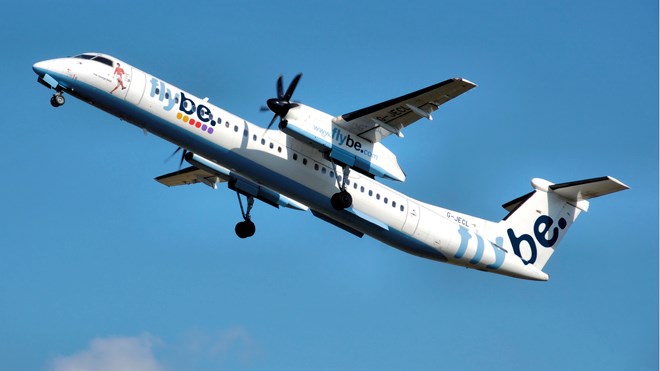The Transportation Safety Board (TSB) has determined that a lack of co-ordination and planning by air traffic control led to a risk of collision between two planes near Sudbury on Oct. 14, 2016.
The incident saw a pair of passenger airplanes, one from Jazz Aviation (Flight 604), the other from Porter Airlines (Flight 533), pass less than a kilometre from each other, both at about 1,200 metres.
The Porter flight was inbound to Sudbury from Toronto’s Billy Bishop airport and the Jazz Aviation flight had just departed for Toronto’s Pearson International Airport. The close proximity of the two planes triggered the on-board collision avoidance system (TCAS) in each plane, sounding cockpit warnings.
In its investigation report released Jan. 23, the TSB said that the risk of collision occurred after Flight 604 made its left turn to fly away from the airport toward its destination. This turn was not apparent to North Bay air traffic control, as the display was set at a scale that was too large to detect heading changes right after they occur.
Unaware of Flight 604's exact position, the controller suggested that it turn right, essentially bringing it back toward the approach path of Runway 04 and in conflict with Flight 533. Following the TCAS resolution advisory, the flight crew from both Flight 604 and 533 initially manoeuvred their respective aircraft contrary to the TCAS commands.
As a result, the vertical separation between the two aircraft was reduced.
The investigation found that the North Bay controllers' practice of clearing incoming instrument flight rules (IFR) aircraft for an approach without regard for the active runway at the Sudbury Airport created a situation where IFR traffic was counter to the flow of, and therefore more likely to come into conflict with, visual flight rules (VFR) traffic operating at the airport.
Further, air traffic control approved the VFR departure of Flight 604 without a coordinated plan to prevent conflict between the aircraft and incoming IFR traffic.
Flight 604 was not fully aware of the traffic situation at the airport when it taxied to Runway 22, as the Sudbury flight service station's taxi departure advisory did not include information about inbound opposite direction traffic.
Radar data indicated that the two aircraft came within 0.4 nautical miles of each other at the same altitude.
*An earlier version of this story indicated the near-collision occurred at Sudbury Airport. That was an error. The collision occurred near the airport. Also, we've replaced the original photo that ran with the article to an image of an actual de Havilland DHC-8 aircraft, the same type involved in the near-collision.
